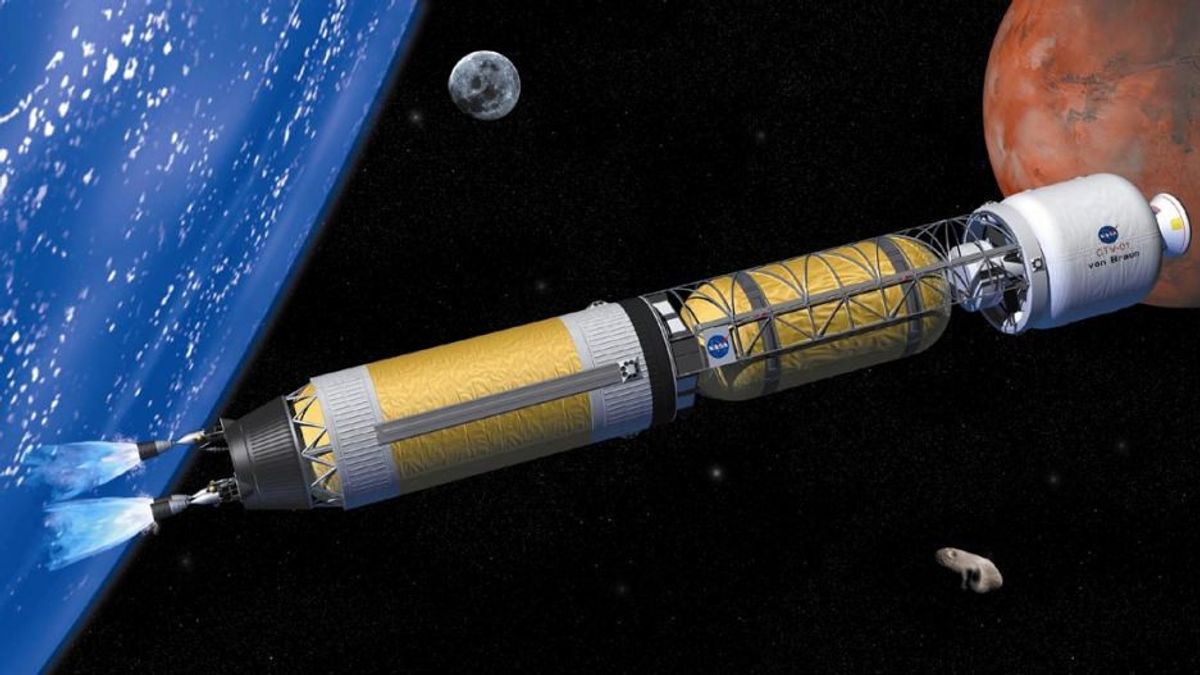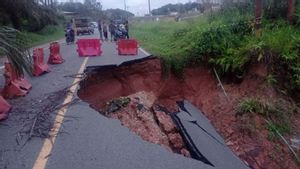JAKARTA - Many are looking for ways to quickly get to an Earth-like planet, namely Mars, one of which is NASA. Recently, the space agency announced funding for nuclear-powered rockets that could deliver astronauts to the planet in just 45 days.
So far, the rocket is quite sophisticated where it uses nuclear as its driving force, and is claimed to cut travel time to Mars.
The Nuclear Thermal Rocket bimodal can be used to transport astronauts and cargo across the Solar System, significantly reducing the main risks associated with interplanetary travel, such as radiation exposure.
NASA and the Soviet Union's space program spent decades researching nuclear propulsion during the Space Race. A few years ago, NASA restarted its nuclear program for the purpose of developing bimodal nuclear propulsion, a two-part system consisting of Nuclear-Thermal Propulsion (NTP) and Nuclear-Electric Propulsion (NEP) elements that allows transit to Mars within 100 days.
As part of NASA's Innovative Advanced Concepts (NIAC) program for 2023, NASA selected the nuclear concept for Phase I development. This new class of bimodal nuclear propulsion systems uses a wave-rotor topping cycle and can reduce transit time to Mars to just 45 days.
The rocket concept was first initiated by Professor Ryan Gosse of the University of Florida, who claims the bimodal design will revolutionize space exploration.
With that, NASA will help fund rocket development through a series of new grants of 12,500 US dollars equivalent to Rp187 million.
Gosse proposal is one of 14 selected by NAIC this year for Phase I development to aid the maturation of the technology and the methods involved. Other proposals include innovative sensors, instruments, manufacturing techniques, power systems, and more.
"By working together, across governments and with industry, the United States is advancing space nuclear propulsion," said Jim Reuter, associate administrator for NASA's Space Technology Mission Directorate.
"This design contract is an important step towards real reactor hardware that one day can drive new missions and exciting discoveries," he added.
From the 1950s to the 1980s, the US and Soviet space programs have both explored the use of NTP for space travel.
Involving liquid hydrogen propellant heating in nuclear reactors, which converts it into a thrust-producing plasma.
Then, NASA attempted to develop a new type of rocket using NEP in the 2000s, using nuclear reactors to generate electricity in engines capable of generating electromagnetic fields to ionize gas, then using it as thrust.
Several efforts have been made to build testing of this propulsion system, including Project Rover, a collaborative effort between the US Air Force and the Atomic Energy Commission (AEC) launched in 1955.
By combining NTP and NEP technology through a bimodal propulsion method, Professor Gosse's design will theoretically double the speed one of the technologies alone is capable of producing.
The English, Chinese, Japanese, Arabic, and French versions are automatically generated by the AI. So there may still be inaccuracies in translating, please always see Indonesian as our main language. (system supported by DigitalSiber.id)








